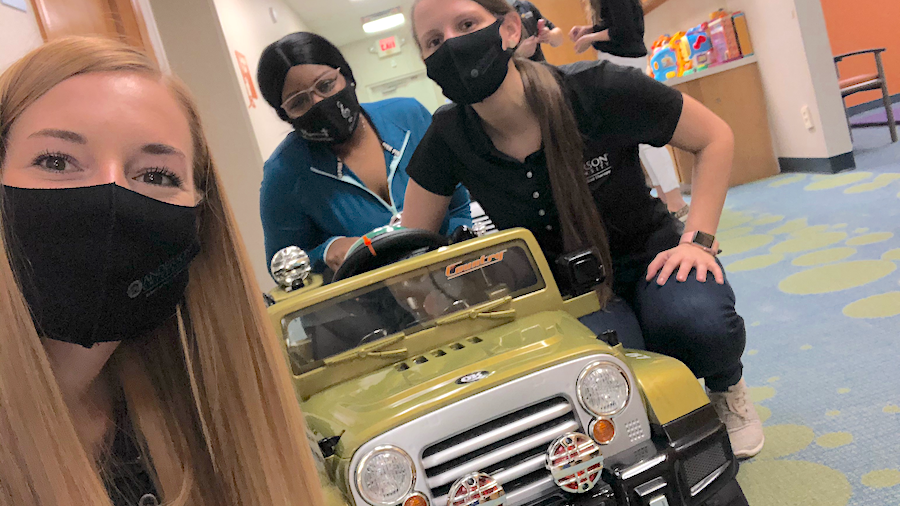There’s no doubt that a cool ride-on car is at the top of a lot of youngsters’ Christmas or birthday list, but there’s another kind of toy car that’s much more than just a fun plaything–it’s a ticket to mobility and independence for children with disabilities.
Upstate children with mobility disabilities are enjoying adapted power wheel cars built by a group of students from the Anderson University School of Physical Therapy.
With a $10,000 grant from The AnMed Foundation, the car kits were ordered and outfitted so that children with mobility disabilities can safely drive them. Dr. Dave Searight, physical therapist at AnMed Health, led the charge in getting the cars and equipment needed to outfit them for the children and Dr. Sue Denninger, Anderson University physical therapy professor, put together a team of students to build the cars and customize them according to each child’s specific needs.
The idea for the cars comes from researchers at the University of Delaware who realized no such ride-on devices were commercially available. They started Go Baby Go, an initiative aimed at developing the cars so that children could get around in ways other than being pushed along in a stroller by a parent or caregiver. Go Baby Go has expanded across the nation and globally, and AnMed Health and Anderson University shared an interest in bringing these unique cars to Upstate children who needed them.
In addition to providing independence and being fun to drive, the cars are the right size for children who are too small to use a power wheelchair, which is also much more expensive.
“They may need more support in the car or a different type of on-off switch or ability to steer,” said Denninger, adding that they start with regular off-the-shelf cars from online retailer Amazon.com, and add modifications.
“The first part is just building and putting together the car, then the second part is to rewire it to operate safely, using a switch that’s easier for kids with mobility disabilities to activate,” Denninger said. “The most common switch used is a big red button; it’s very simple and sensitive. Often kids have upper extremity trouble using their arms and their hands, and so this allows them to really have control of it when it starts and stops.”
Denninger added that since some children have difficulty steering, they get radio-controlled (RC) cars so that a parent or a caregiver could drive the car as needed to steer, turn off or on. In addition to the wiring, students also used PVC pipe and pool noodles to add body support customized to a child’s needs and for their safety.
According to Dr. Martha Hinman, chair of AU’s School of Physical Therapy, this project is but one of many opportunities in which PT students live up to the program motto of “Serving Him by Serving Others.”
Details about Go Baby Go can be found online.

